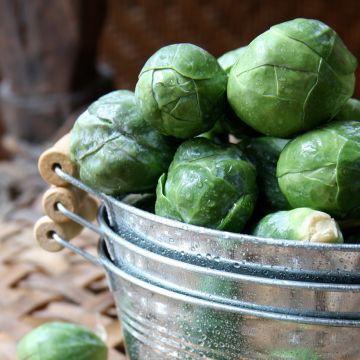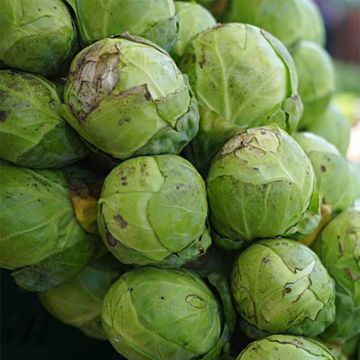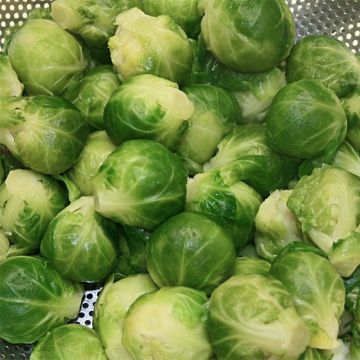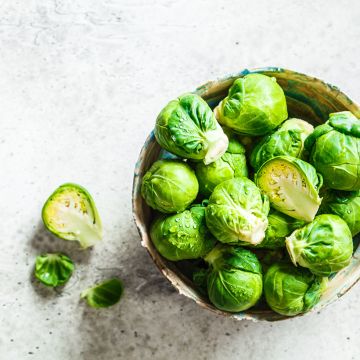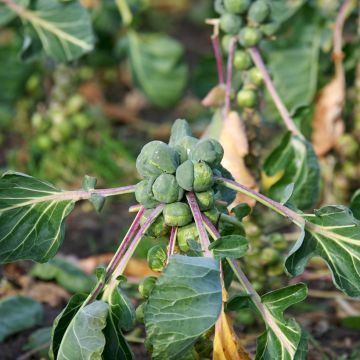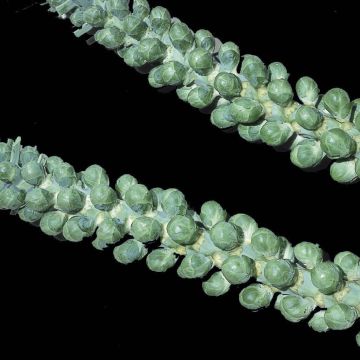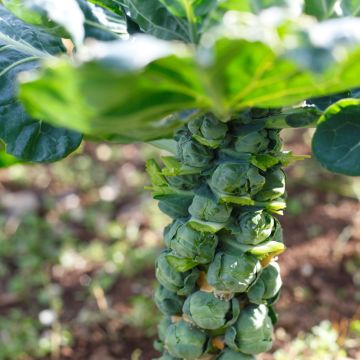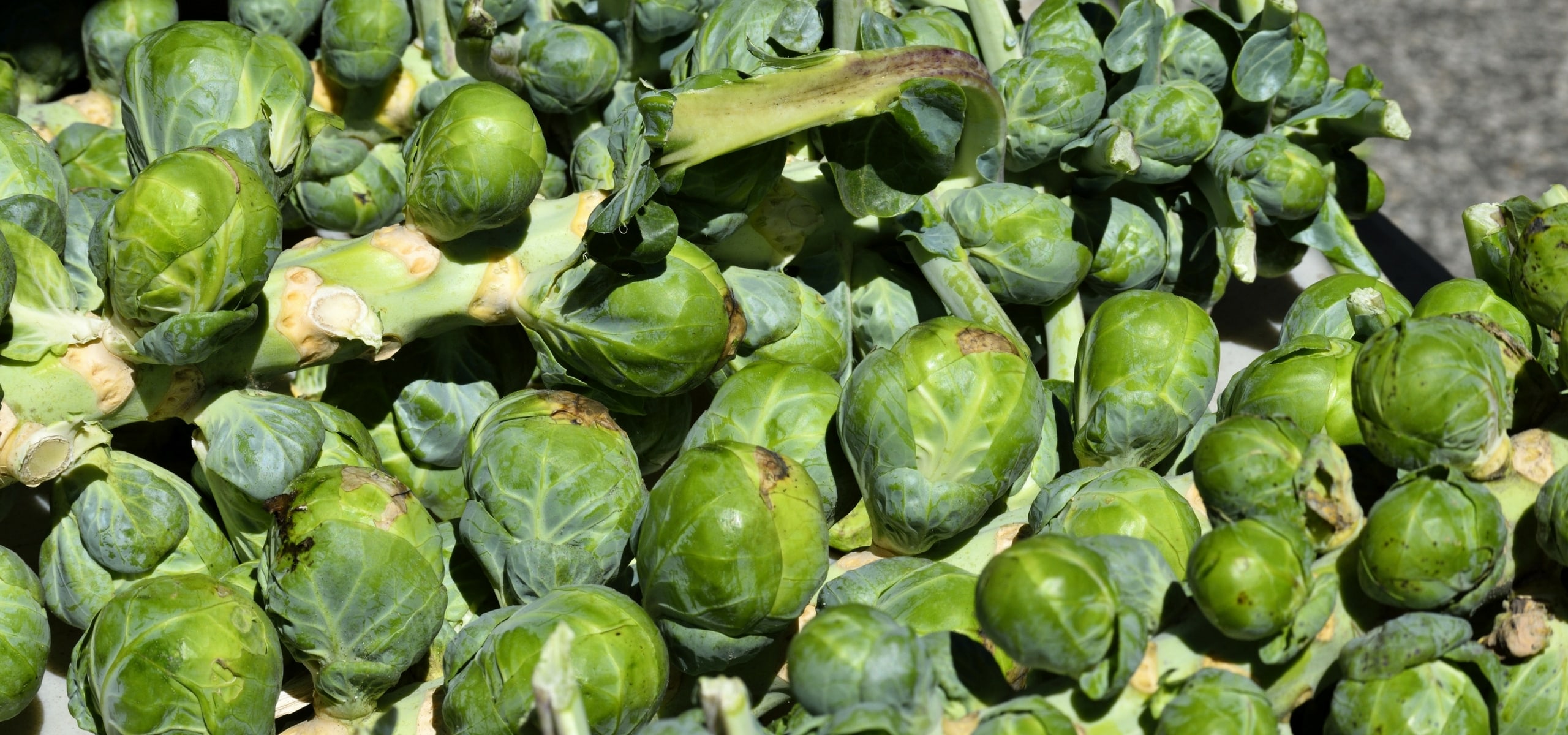
Succeeding in growing Brussels sprouts
In the vegetable garden
Contents
Originating from Belgium, Brussels sprouts are a variety of cabbage grown for their small auxiliary buds. They appear as a vertical stem on which small “heads” grow, which are the cabbages themselves. They are spiralled along the stem and often measure between 1 and 3 cm. Each plant can bear 20 to 75 of these small cabbages. The plant can reach a height of 60 to 120 cm. The leaves are large, green, and resemble those of other cabbages.
Brussels sprouts are rich in vitamins, minerals, and antioxidants. Grown mainly in Europe and North America, they are often consumed cooked, whether boiled, roasted, or sautéed. Their taste is slightly bitter, but they can become sweet and nutty when well prepared. Brussels sprouts are an excellent ally for health and can be incorporated into various recipes for a nutritious meal.
Discover all our tips for growing them in your vegetable garden!
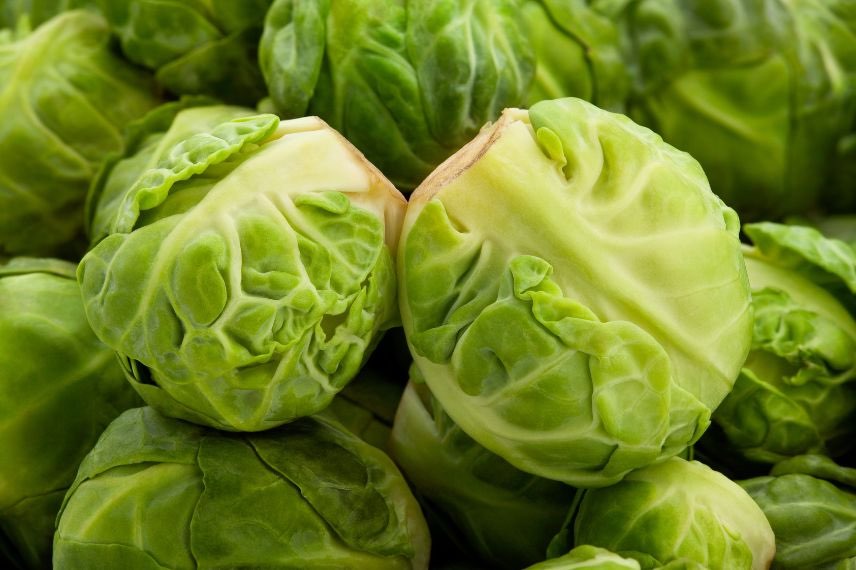
Location and soil
The Brussels sprout is a vegetable far less demanding than most cabbages. It thrives in sunlight, in moderately rich soil. It is particularly sensitive to excess nitrogen, which can result in the formation of small heads or their splitting. It is not very tolerant of soil pH, which should be between 5.6 and 6.5. In acidic soil, it is important to gradually raise this pH by adding calcium in the form of Dolomite or Lime.
In the vegetable garden, it pairs well with parsnip, courgette, and leek, but avoid planting it near chicory and black radish.
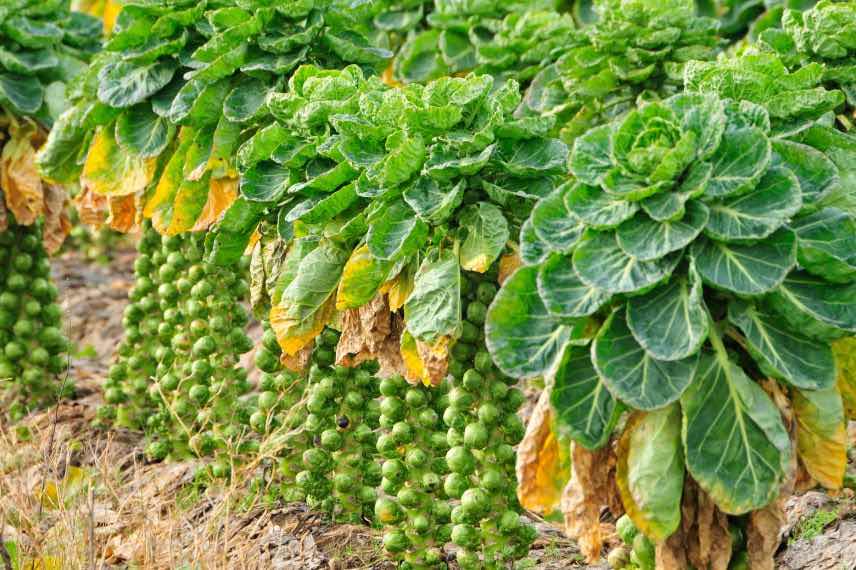
When and how to sow Brussels sprouts?
In general, Brussels sprouts are sown in March-April and planted in May-June. However, each variety has an ideal sowing period: this information is indicated on the seed packet, and it is important to refer to it. Regarding the choice of varieties, some, like ‘Jade Cross F1’, are particularly early, while others, like ‘Sanda’, are rather late: combining them will allow you to harvest over a very long period.
You can proceed with direct sowing in place or prepare young plants that will then be installed in their final position in the garden.
Preparation of Young Plants
- In a heated shelter at the end of winter, in a cold greenhouse, or in a nursery in the garden for the rest of the year, sow the seeds at a depth of 1 cm in good seed compost
- Lightly cover with compost or vermiculite
- Do not forget to keep the substrate moist but not waterlogged
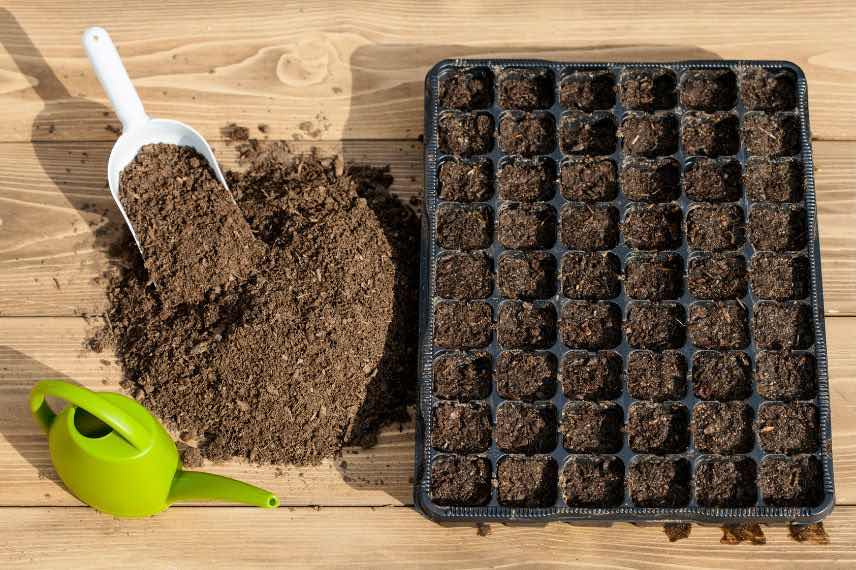
When the young plants appear strong enough to be handled, transplant them into buckets if necessary, and for seedlings in a heated shelter, gradually acclimatise them to cooler temperatures before transplanting them into the garden when no frost is expected.
Direct Sowing
- In well-amended and finely worked soil, trace furrows 1 cm deep, spaced 65 cm apart
- Sow the seeds and cover them with a thin layer of fine soil
- When the seedlings are well developed, thin them out, keeping only one plant every 65 cm or so.
Discover other Brussels sprouts
View all →Available in 1 sizes
Available in 1 sizes
Available in 1 sizes
Available in 1 sizes
Available in 1 sizes
Available in 2 sizes
Available in 1 sizes
Available in 1 sizes
Available in 1 sizes
When and how to plant Brussels sprouts?
Preparing or purchasing young plants for transplanting is the most commonly used method. Once well-developed, the young plants are installed in the vegetable garden in their final position. They should be planted in a sunny and sheltered location, in warmed and well-prepared soil: weeded, loosened with a spade or an organic fork, and then raked with a rake to achieve fine soil.
- Space the young plants 65 cm apart in all directions (between the ranks and between each plant in the rank).
- Soak the root ball in water for a few moments before planting.
- Dig a hole, place the young plant, and cover with fine soil. The young plants are buried up to the first true leaves: new roots will form along the buried stem, ensuring better anchorage in the soil.
- As Brussels sprouts grow tall, it is advisable, in windy situations, to stake the plants.
- Water generously.
- To limit watering, we recommend mulching the soil with fine successive layers of grass clippings, if possible mixed with fallen leaves.
- During the growing season, water moderately but regularly.
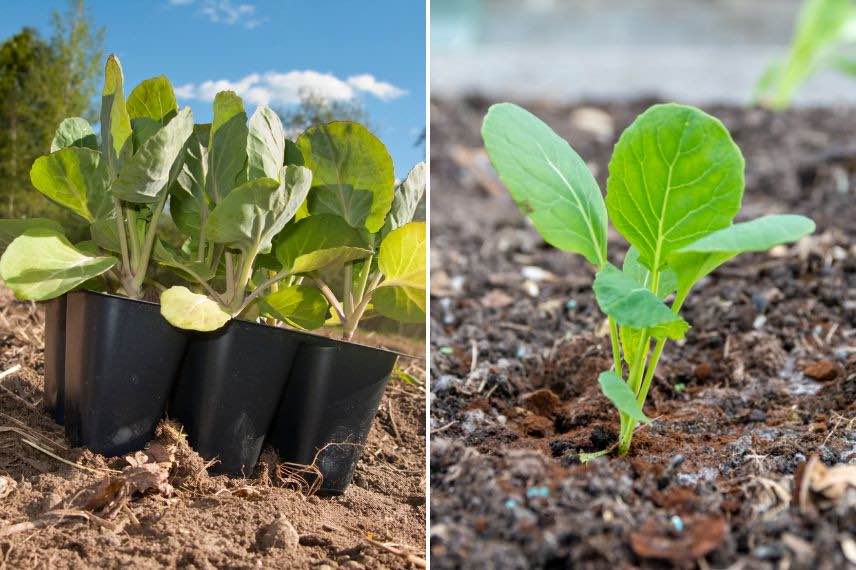
Maintenance and watering
Caring for these cabbages involves performing hoeing, cultivating, and regular watering. Their growth is slow, and these tasks recur regularly over a long period. They can be spaced out or significantly reduced if you mulch the soil with thin successive layers of dried grass clippings, for example.
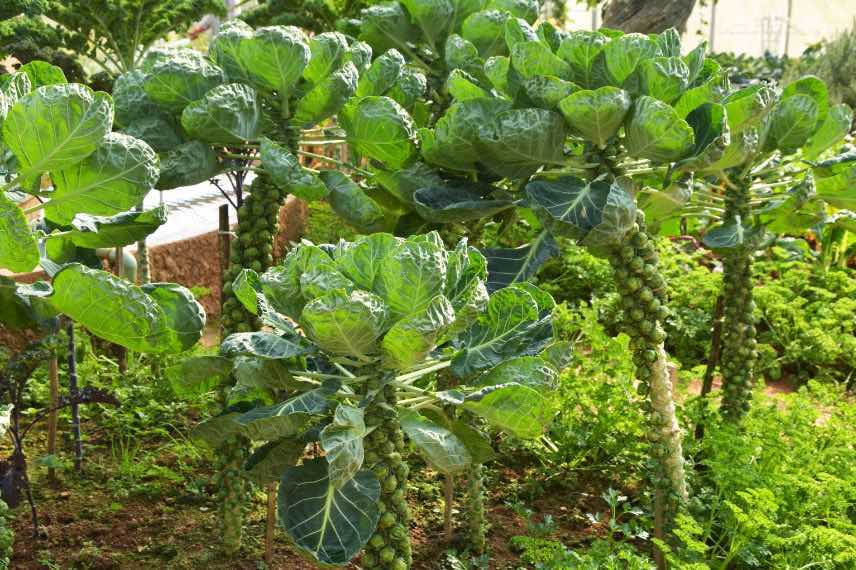
Pests and potential diseases
Cabbages are quite sensitive to diseases and pests. When growing Brussels sprouts, you may encounter:
– the cabbage fly, whose larvae devour the roots,
– the cabbage white butterfly, whose caterpillars ravage the foliage,
– the cabbage gall midge, which attacks the central bud (“blind cabbage”),
– flea beetles that perforate the leaves of brassicas in general.
Various methods of combating these pests exist (cardboard collars against the fly, spraying with Bacillus thuringiensis, manual collection of caterpillars…), but to keep them at bay, the best prevention is to install a insect netting.
Regarding diseases, cabbage root rot is the most virulent. It manifests as wilting of the foliage associated with the appearance of nodosities on the collar and roots. There is no natural solution, but the best prevention is to adhere to crop rotations in the vegetable garden by not growing cabbage in the same spot for at least 5 years.
To learn more, check out our complete article: Diseases and Pests of Cabbage
Harvest
The harvest of Brussels sprouts takes place from September to December, and even until March for the latest varieties like ‘Sanda’. The small heads are cut with a knife or gently detached by hand when they reach 2-3 cm, starting from the bottom of the stem. For late varieties, it is advisable to wait for the first frosts: the sprouts will develop a sweeter aroma.
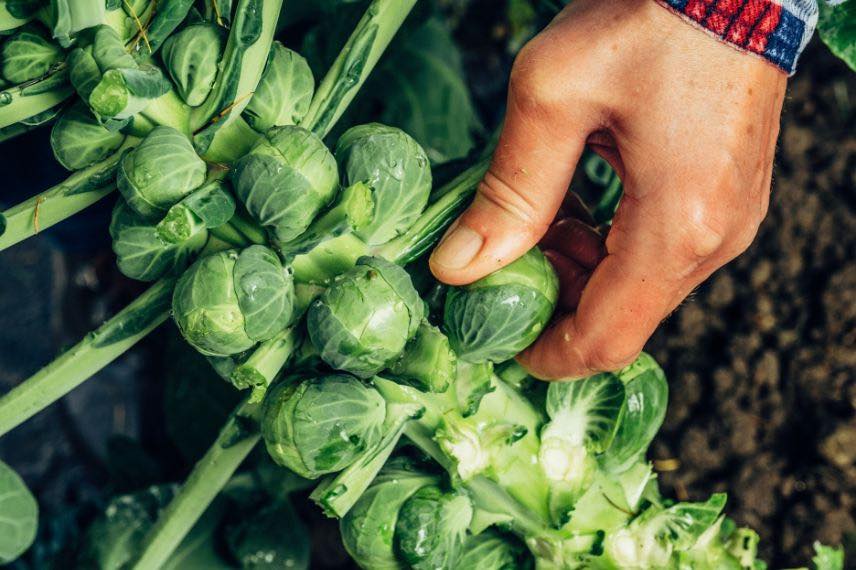
To go further
- Discover everything you need to know about cabbage in our comprehensive guide!
- Subscribe!
- Contents































